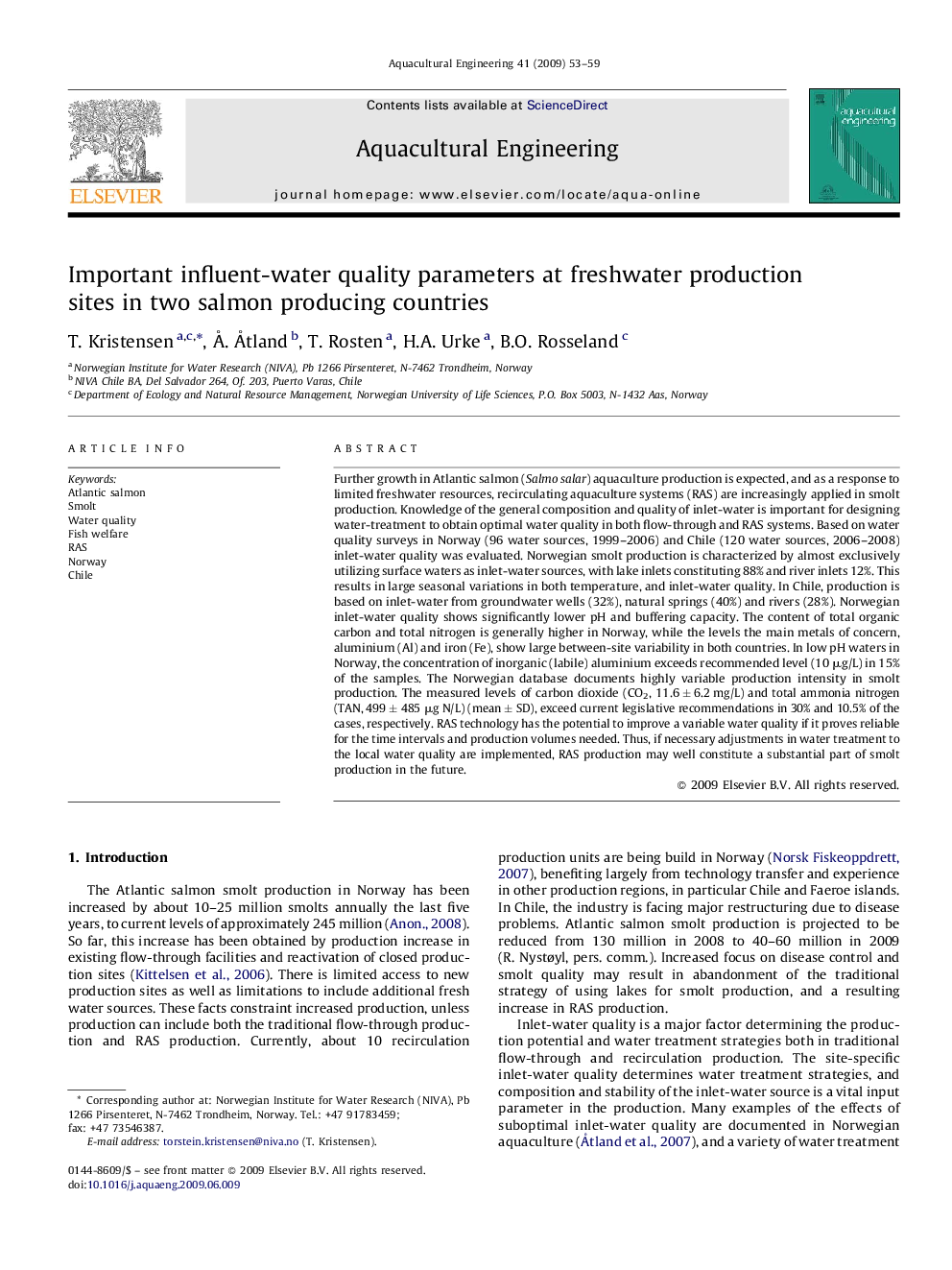| Article ID | Journal | Published Year | Pages | File Type |
|---|---|---|---|---|
| 6381494 | Aquacultural Engineering | 2009 | 7 Pages |
Abstract
Further growth in Atlantic salmon (Salmo salar) aquaculture production is expected, and as a response to limited freshwater resources, recirculating aquaculture systems (RAS) are increasingly applied in smolt production. Knowledge of the general composition and quality of inlet-water is important for designing water-treatment to obtain optimal water quality in both flow-through and RAS systems. Based on water quality surveys in Norway (96 water sources, 1999-2006) and Chile (120 water sources, 2006-2008) inlet-water quality was evaluated. Norwegian smolt production is characterized by almost exclusively utilizing surface waters as inlet-water sources, with lake inlets constituting 88% and river inlets 12%. This results in large seasonal variations in both temperature, and inlet-water quality. In Chile, production is based on inlet-water from groundwater wells (32%), natural springs (40%) and rivers (28%). Norwegian inlet-water quality shows significantly lower pH and buffering capacity. The content of total organic carbon and total nitrogen is generally higher in Norway, while the levels the main metals of concern, aluminium (Al) and iron (Fe), show large between-site variability in both countries. In low pH waters in Norway, the concentration of inorganic (labile) aluminium exceeds recommended level (10 μg/L) in 15% of the samples. The Norwegian database documents highly variable production intensity in smolt production. The measured levels of carbon dioxide (CO2, 11.6 ± 6.2 mg/L) and total ammonia nitrogen (TAN, 499 ± 485 μg N/L) (mean ± SD), exceed current legislative recommendations in 30% and 10.5% of the cases, respectively. RAS technology has the potential to improve a variable water quality if it proves reliable for the time intervals and production volumes needed. Thus, if necessary adjustments in water treatment to the local water quality are implemented, RAS production may well constitute a substantial part of smolt production in the future.
Related Topics
Life Sciences
Agricultural and Biological Sciences
Aquatic Science
Authors
T. Kristensen, Ã
. Ã
tland, T. Rosten, H.A. Urke, B.O. Rosseland,
